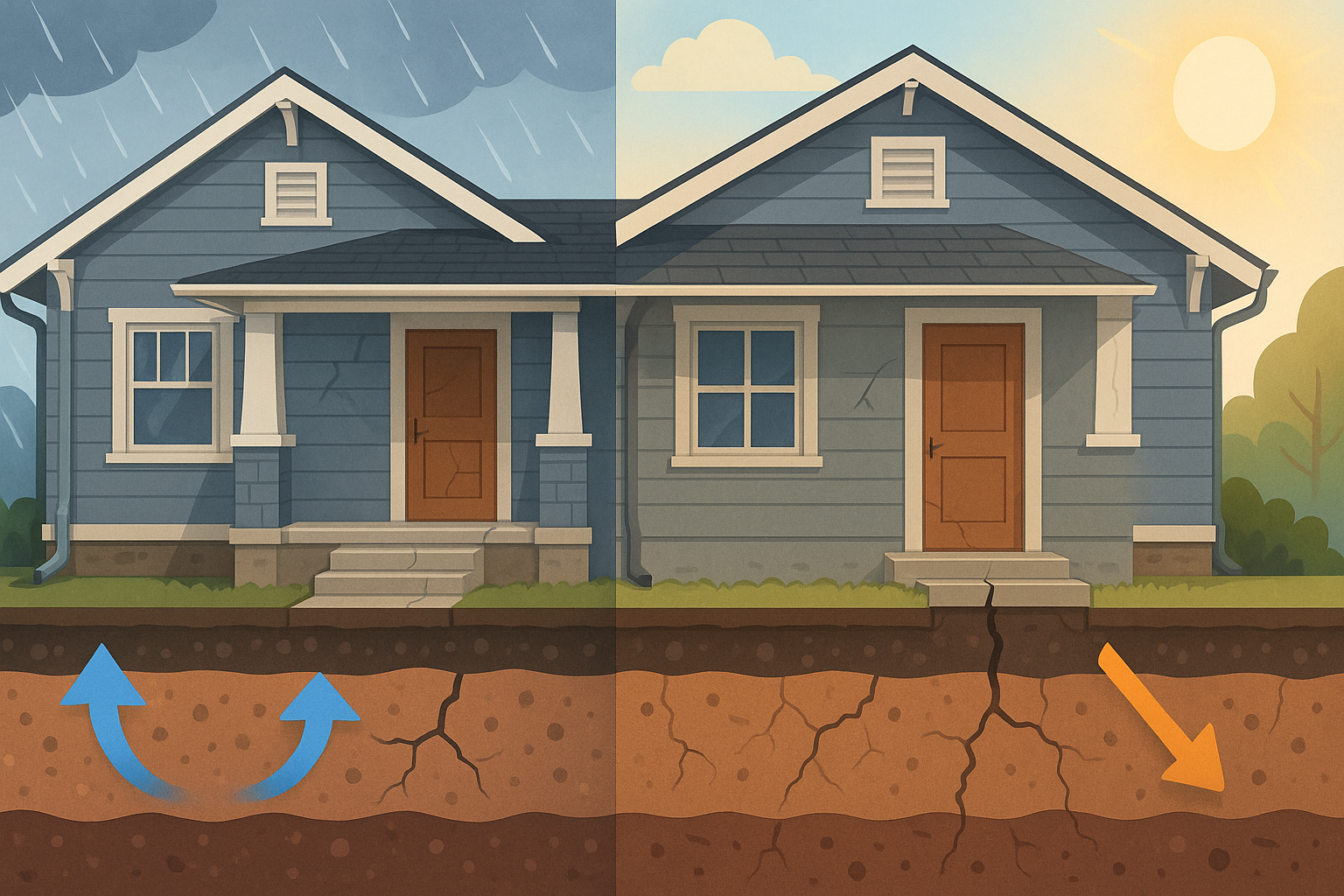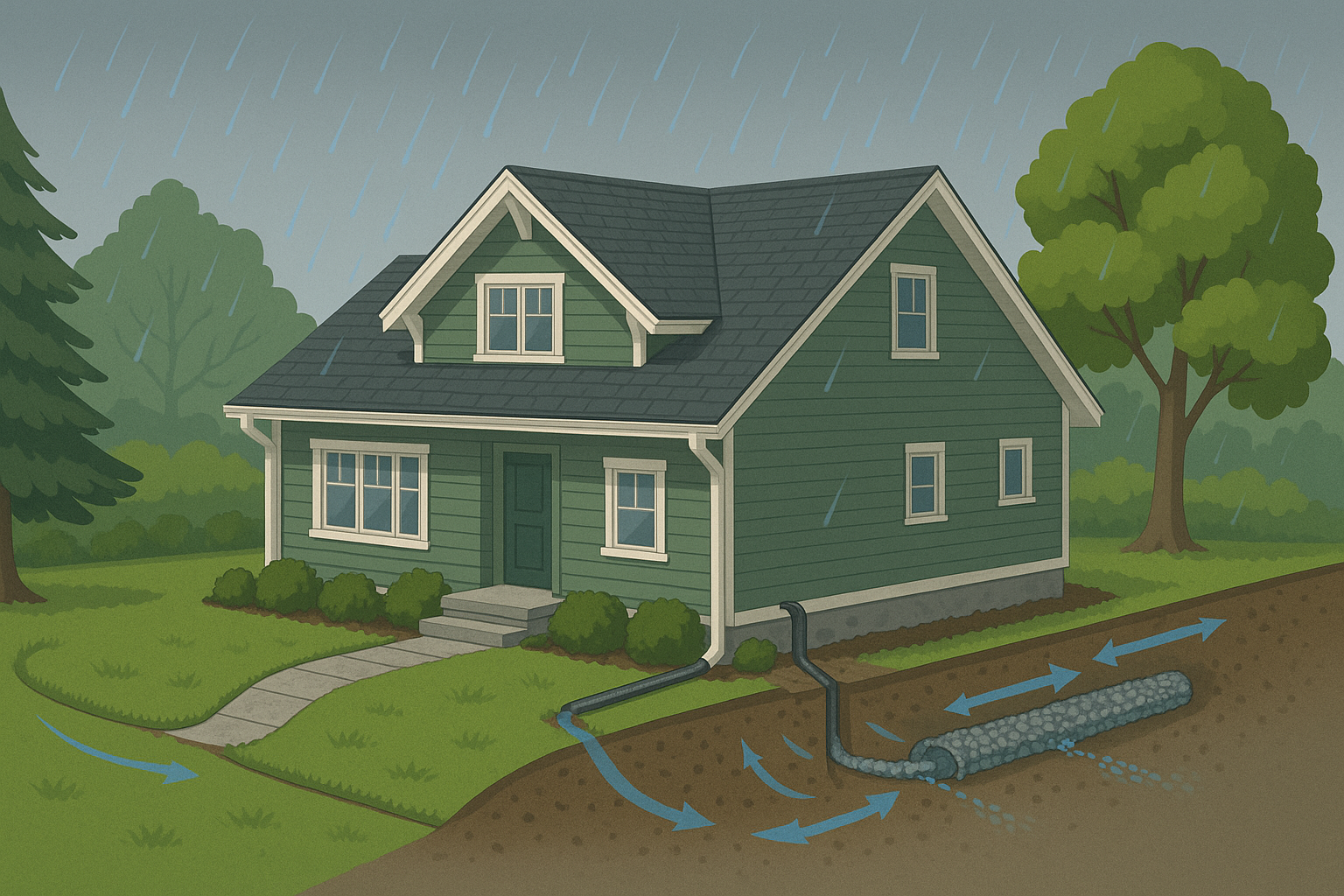Expansive Clay in Medford: The #1 Hidden Cause of Foundation Cracks

Medford, OR – Beneath the picturesque landscapes of the Rogue Valley lies a hidden threat to homeowners: expansive clay soil. This unique soil type, common throughout Medford and the surrounding areas, is a primary culprit behind cracked foundations, sticking doors, and uneven floors. Seasonal moisture changes, from rainy winters to hot, dry summers, cause this soil to swell and shrink, exerting immense pressure on your home's foundation and leading to significant structural issues over time. Understanding the risks associated with expansive clay is the first step toward protecting your investment and ensuring the long-term stability of your home.
Expansive Clay in Medford: What It Means for Your Home’s Foundation
For homeowners in Medford and across Jackson County, the ground beneath their feet can be both a blessing and a challenge. The region's fertile soil is a boon for agriculture, but it often contains a high concentration of expansive clay. This type of soil is characterized by its ability to absorb a significant amount of water, causing it to expand in volume. Conversely, as it dries out, it shrinks and can pull away from your foundation. This cyclical movement can lead to serious foundation problems for homes in Southern Oregon.
What Is Expansive Clay?
Expansive clay is a type of soil that dramatically swells when it absorbs water and shrinks when it dries. This shrink-swell cycle is particularly pronounced in the Rogue Valley, with its distinct wet and dry seasons. During the rainy winter months, the clay soil becomes saturated and expands, putting upward pressure on foundations. In the hot, dry summer, the soil loses moisture and contracts, which can cause the foundation to settle or sink.
This constant movement can affect different types of foundations in various ways. Slab-on-grade foundations may experience heaving and cracking in the center of the slab, while homes with crawlspaces might see movement in the support posts and piers, leading to sloping floors.
Warning Signs Around Your Home
The damage from expansive clay often manifests in subtle ways at first, but can escalate into major structural problems. Homeowners should be vigilant for the following warning signs:
- Cracks in Brick or Concrete: Look for stair-step cracks in brickwork or block foundations, as well as horizontal cracks, which can indicate significant pressure on the walls.
- Sticking Doors and Windows: As the foundation shifts, it can misalign door and window frames, making them difficult to open or close.
- Uneven Floors and Heaving Slabs: You might notice floors that are no longer level or sections of your concrete slab, driveway, or sidewalk that have been pushed upward.
- Drywall Cracks and Nail Pops: Cracks appearing at the corners of walls and ceilings, or nails that seem to be pushing out of the drywall, are common indicators of foundation movement.
DIY Checks vs. Professional Assessment
Homeowners can perform a few simple checks to gauge potential foundation issues. The "marble roll test" involves placing a marble on the floor to see if it rolls, indicating a slope. You can also monitor existing cracks by measuring their width over time to see if they are actively growing.
However, if you notice significant or ongoing changes, it's crucial to call for a professional assessment. Issues like active foundation movement, water pooling near your foundation, or recurring seasonal problems are best addressed by experts.
During a professional inspection from Elite Foundation Repair, you can expect a comprehensive evaluation. This includes a level survey to measure the evenness of your foundation, an assessment of soil and moisture conditions, and detailed photo documentation of any problem areas.
Proven Repair & Prevention Options
Fortunately, there are effective solutions to manage the effects of expansive clay and protect your home's foundation. These solutions can be broadly categorized into water management and structural repairs.
Soil and Water Management:
Proper drainage is the first line of defense. This includes ensuring your gutters are clean and functional, adding downspout extensions to direct water at least 5-10 feet away from the foundation, and regrading your property so that the ground slopes away from your home. In some cases, a French drain system may be recommended to intercept and redirect subsurface water.
Structural Solutions:
For existing foundation damage, more robust solutions are often necessary. Helical piers are a proven method to stabilize a foundation. These steel piers are screwed deep into the ground until they reach stable soil strata, effectively transferring the weight of your home off the volatile expansive clay. For bowing or leaning walls, helical tiebacks can be used to pull the wall back into a more vertical position.
Floor Support:
In homes with crawlspaces, sagging floors can be corrected with the installation of adjustable crawlspace jacks and support beams, providing additional stability to the floor joists.
Monitoring:
For minor cracks or areas of concern, crack gauges can be installed to monitor any movement over time, helping to determine if and when more significant repairs are needed.
Cost Factors (Transparent Overview)
The cost of foundation repair can vary widely depending on several factors. The primary determinants include the scope of the project (such as the number of helical piers required and their depth), ease of access to the work area, and whether engineering plans and permits are necessary. Any additional drainage solutions will also be factored into the overall cost.
At Elite Foundation Repair, we pride ourselves on providing straightforward pricing without sales pressure or gimmicks. We are a certified installer of CHANCE® Helical Piers, which come with a 30-year, transferable product warranty, offering you long-term peace of mind.
Maintenance & Long-Term Stability
After any necessary repairs are made, ongoing maintenance is key to ensuring the long-term stability of your foundation.
- Water Management: Consistently keep water at least 5 to 10 feet away from your foundation.
- Gutter Checks: Regularly clean your gutters and ensure downspouts are discharging water well away from your home.
- Landscaping: Avoid heavy irrigation directly against your foundation walls. When planting trees or large shrubs, consider their mature root systems and plant them a safe distance from your home.
- Annual Inspections: Consider having a professional foundation check-up annually to catch any potential issues early.
Why Choose Elite Foundation Repair
With a background in construction from the age of 13, our owner brings a lifetime of hands-on experience to every project. As a CHANCE® Certified Installer, our crew is expertly trained in the latest and most effective foundation repair techniques. We are a local team dedicated to clear, direct communication and maintaining clean, organized job sites. We provide thorough documentation of all our work, ensuring you have a complete record of the repairs performed on your home.
Ready to address your foundation concerns? Contact us for a free, no-pressure foundation check in Medford and surrounding communities. Call or text (541) 631-4242 or request an inspection online.
Frequently Asked Questions (FAQ)
Does Medford really have expansive clay, and how common is it near my neighborhood?
Yes, expansive clay soils are present in the Medford area and throughout the Rogue Valley. The "Medford Series" soil, found in the region, is known to contain smectitic clays which have a high shrink-swell potential. The prevalence can vary, but it's a significant factor for construction and foundation maintenance in this part of Southern Oregon.
What’s the difference between heave from clay and settlement from poor fill?
Foundation heave is the upward movement of a foundation caused by the expansion of clay soils when they absorb water. Settlement, on the other hand, is the downward movement of a foundation. This can be caused by the shrinking of clay soils during dry periods or by the consolidation of poorly compacted fill soil that was placed during the initial construction of the home.
Can watering schedules reduce seasonal movement?
Yes, a consistent watering program can help reduce the extreme seasonal movement of expansive clay soils. By maintaining a relatively stable moisture content in the soil around your foundation, you can prevent the drastic shrinking and swelling that leads to foundation damage. This often involves using soaker hoses placed a short distance from the foundation to provide a slow, steady supply of water during dry periods.
How long do helical pier repairs last?
Helical piers are designed to be a long-term to permanent solution. Made of galvanized steel to resist corrosion, they can have a lifespan of over 100 years when installed correctly in suitable soil conditions.
Will repairs affect my home’s resale value?
While foundation repairs may not necessarily increase your home's market value, they are crucial for maintaining it. Failing to address foundation issues can significantly decrease your home's value and make it difficult to sell. Having professional repairs completed, with a transferable warranty, provides peace of mind to potential buyers and can help the sale process go more smoothly.




